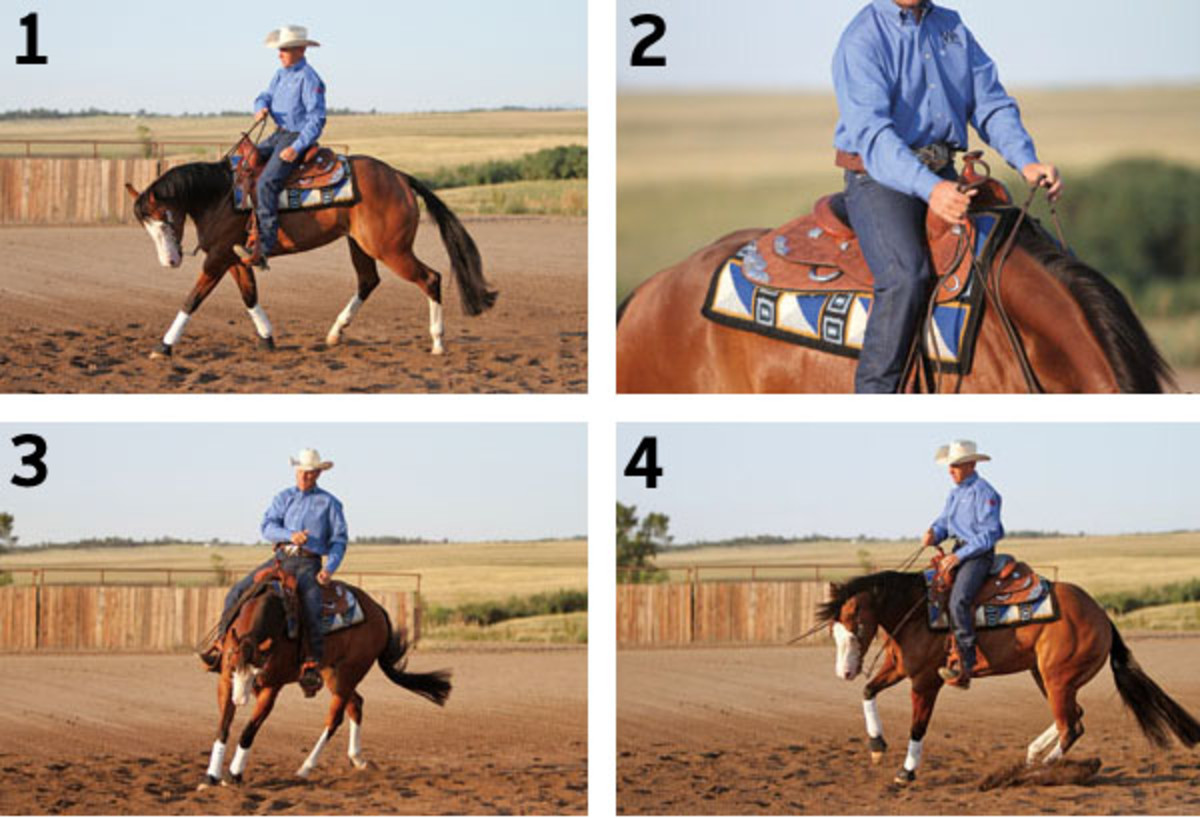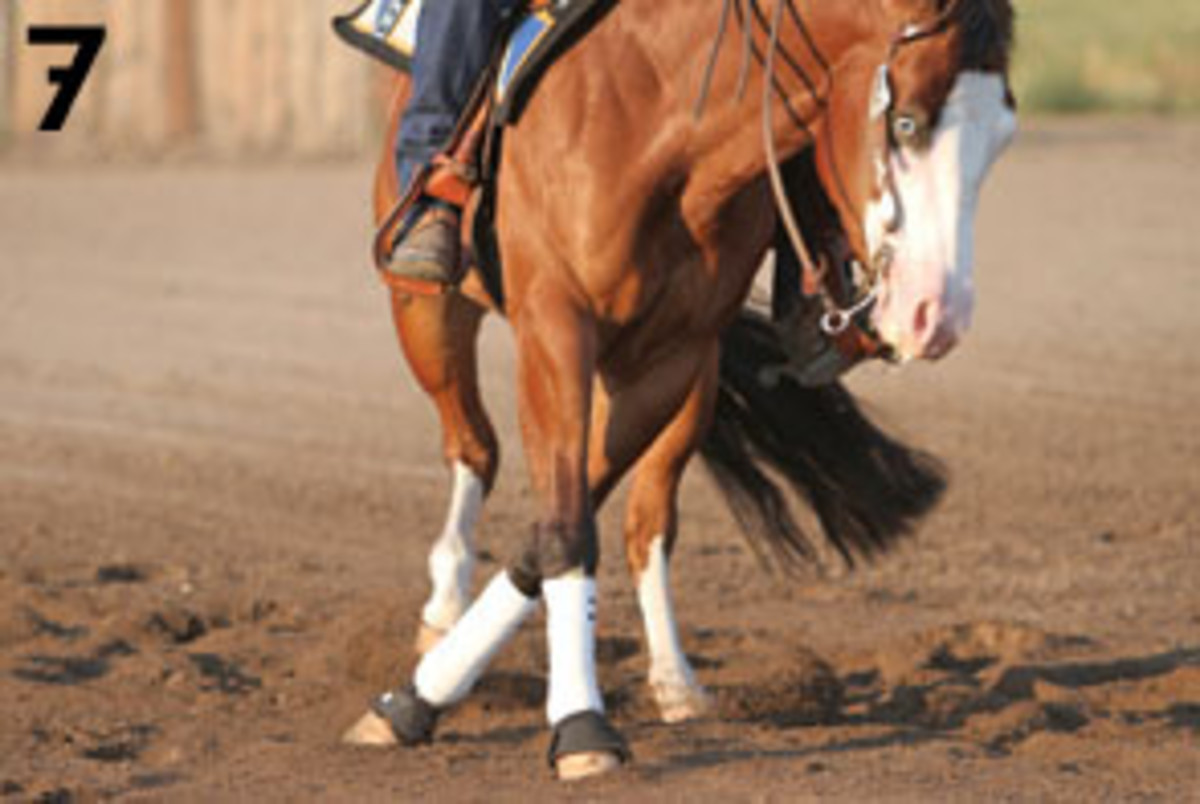Lesson Objective
If you compete: Master the basics of the first moments of a spin (turnaround) to ensure that you finish with a bang.
If you don’t: A solid turnaround is essential for control and enhancing a horse’s guidability, and can come in handy in tight spots on the trail.
How you start a spin sets the tone for the entire maneuver, whether it’s a single 360 or a group of four spins, as in a reining pattern. There are two essential components when starting this maneuver: 1. The turn must begin with forward motion (many people think of the spin as a maneuver on the hindquarters, but it actually starts with moving forward), and 2. The horse must be “between your reins,” which literally means that if you lay the right rein on, the feet move; same for the left rein. When your hand moves left or right, your horse should move his feet.
Here, I’ll show you an exercise to get your horse in a thinking frame of mind for turnarounds and show you how to correctly initiate a spin. I suggest working on this with your horse in a shanked bit and with one hand on the reins, because then you and your horse have less chance of developing crutches or bad habits that’ll get in the way when you compete.
1. Start by trotting a small circle, going along at a strong pace. Encourage a lot of drive from your horse’s hind end and life in his trot. Guide with one hand as much as possible for this exercise, but use two hands, if necessary, for correction. Let your horse make a mistake, and correct it; don’t protect him from mistakes.

2. When you do ride with two hands, be sure to keep them close together, as shown in the photo on the left. Holding them far apart leaves too much gray area for your horse—too much room for him to wonder what you want (and wander out of position).
3. Trot with a strong cadence, and keep your horse between the reins, tipping his nose farther to the inside if he gets too straight or straightening his neck if he feels too stiff or looks outside the circle. Transition from the trot to a spin by guiding with your hand, laying the outside rein on your horse’s neck. What would’ve been your horse’s next forward step to stay on a circle becomes the foot he’ll cross in front of the other for the turn—in this case my horse’s right foot for a turn to the left. Note that here my mare’s shoulder is leaning to the inside. Lifting with the inside rein will help elevate her shoulder into proper position.
4. As you work through your spin, pick up your inside rein if your horse is too straight or stiff in his neck. Pull the rein up rather than back, to keep your horse from sucking backward and losing forward motion, but still tip his nose in the direction of the turn. Be sure to keep your inside leg off, to give him somewhere to go. If stiffness is a continued problem, consider a bit with a broken mouthpiece.
5. If he bends too far to the inside of the spin, pick up your outside hand to straighten his neck. If he then looks too far out, use the inside rein to pull his nose back in. Again, pull the rein straight up rather than back, to keep your horse from sucking back instead of bending. If he continues to be too “bendy,” try a bit with a solid mouthpiece to help keep him straighter.

6. After warming up with the trotting exercise, I’m ready to initiate a spin from a standstill. Whether you cue your horse to start the turn with your hand or your leg is up to you; I prefer to cue with my hand. As I lay the outside rein on my horse’s neck, which is squarely between the reins, you can see that she’s about to initiate the turn by stepping back with her inside front foot and then forward and across with her outside right-front foot.
7. She makes the first step of the turn, and you can see that my inside leg is off her side, so I’m not pushing her ribcage or her hip out of the turn. I can ask for more speed by clucking or kissing to her. I use my voice to add speed rather than my outside leg, because I don’t want to push her ribcage into the turn.

Devin Warren, Franktown, Colorado. Devin has won numerous reining titles from APHA and NRHA events, as well as been a finalist at major NRHA events. He trains reining horses and coaches non-pro and youth riders.






